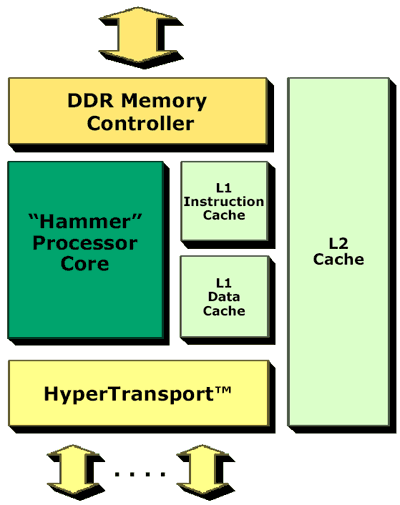AMD Opteron Coverage - Part 1: Intro to Opteron/K8 Architecture
by Anand Lal Shimpi on April 23, 2003 3:03 AM EST- Posted in
- CPUs
Look what we found, an on-die memory controller
One of the most controversial decisions behind the K8 core was to integrate the majority of the North Bridge functionality on-die, including the memory controller.

The Opteron features a 144-bit wide DDR memory bus, meaning that 72-bit (64-bit + 8 parity bits for ECC memory) DIMMs must be installed in pairs. As the bus widths allude to, the Opteron only supports registered ECC DDR SDRAM.
The benefits of an integrated memory controller are clear - low latency memory accesses and an extremely fast controller design thanks to the fact that it is manufactured using the latest processes using the fastest transistors.
|
You can see that the integrated memory controller of the Opteron is significantly lower latency than the nForce2's dual-channel DDR memory controller. It is also worth noting that the 875P memory controller is extremely low latency, especially for an external controller - but you have to keep in mind that we're comparing two different clock speed CPUs here when we're comparing to the Intel platform. While the platform may have a latency similar to that of the Opteron, the CPU is running at a much higher frequency meaning that more clock cycles are being wasted in the same amount of time:
|
The above graph shows the number of clock cycles wasted on waiting for data from main memory, here we see the clear advantage of having an on-die memory controller.
The downside to the on-die memory controller is that in order to get support for new memory technologies, you need to replace your CPU, not just your motherboard. AMD has built functionality into the K8 core that allows an external chipset to disable the on-die memory controller and use an external one. However, remember that a K8 without the integrated memory controller is basically like an optimized K7 with a longer pipeline.










1 Comments
View All Comments
skunklet - Thursday, June 30, 2005 - link
YEAH